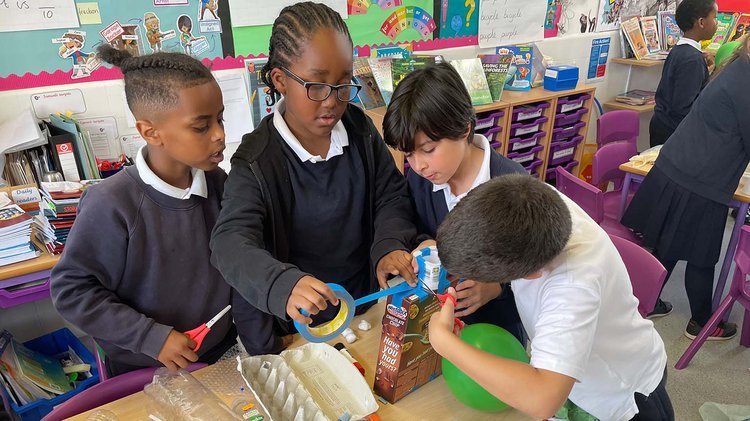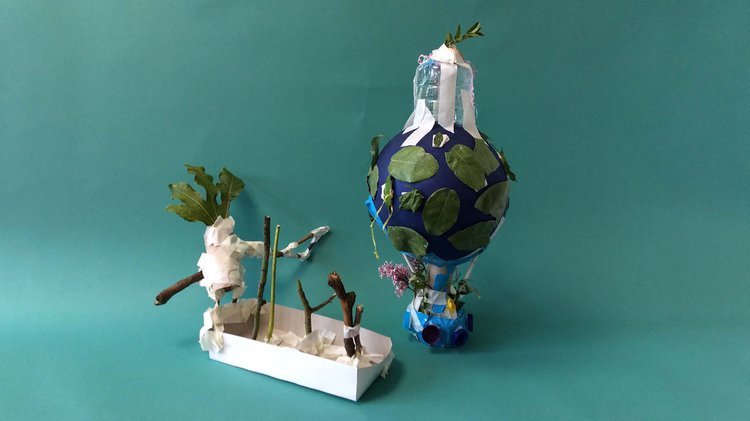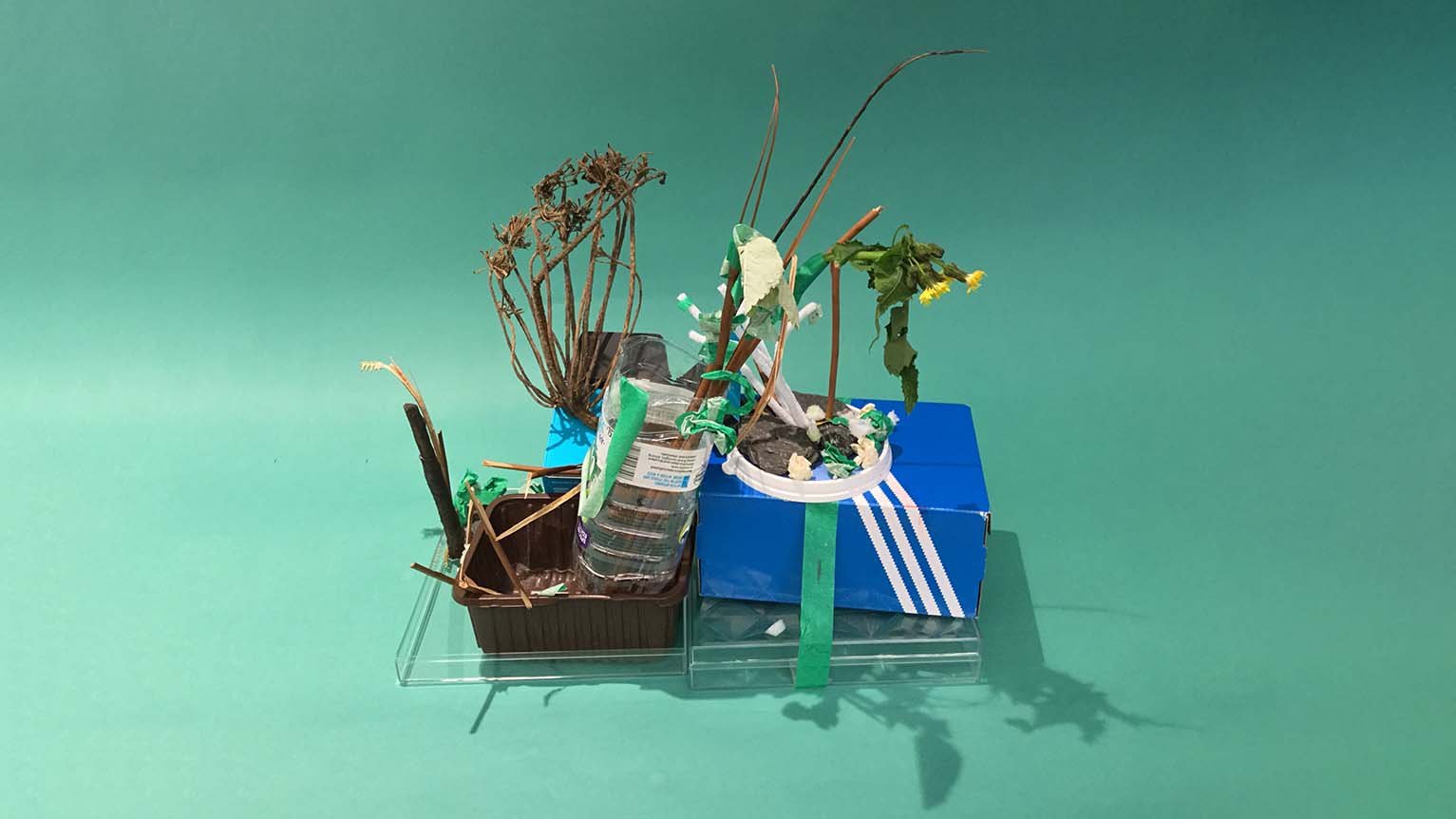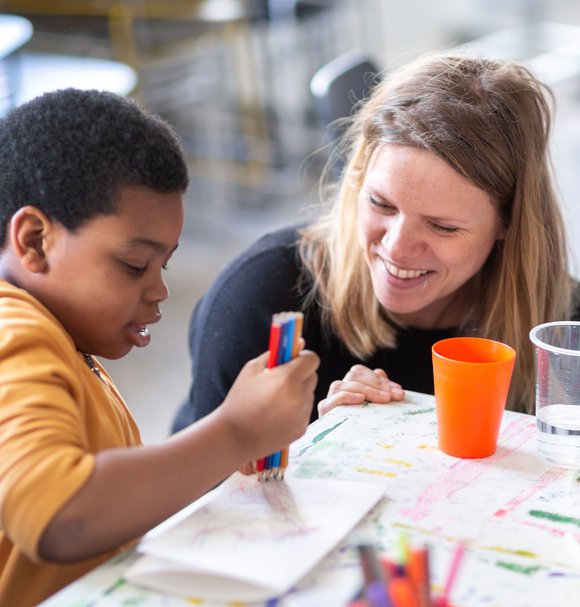Key details
Date
- 2 November 2021
Author
- RCA
Read time
- 3 minutes
MA Photography students have collaborated with Wandsworth Council's Arts Service on a project for primary school pupils across the borough.

Earlier this year, a team of RCA graduates from our MA Photography led a project in collaboration with Wandsworth Council's Arts Service for 670 pupils between the ages of 8–11 in schools across Wandsworth exploring the climate emergency through art.
Four graduates, Alexander Mourant, Eleonora Agostini, Matthew Rhys Thompson and Sara Marinangeli devised and led 25 sculpture and cyanotype workshops in fifteen schools, with support from artist and Tutor, Tom Lovelace. The pupils' artworks were photographed and shown as part of Wandsworth Arts Fringe this summer, online and in real life.
We spoke to our graduates about what it was like working with local schools across Wandsworth and how they were able to further their practice through the project.

What was it like devising photography workshops for schools on such a large-scale?
Matthew Thompson: At first it was a slightly daunting experience to take such a wide and pressing subject and realise the most effective ways to engage students with this subject, feeling so far away from that period in our own lives. However, as we researched, proposed and developed potential avenues together, we realised a more precise direction and were able to concentrate our focus upon executing a workshop design that was educational, flexible and fun.
Eleonora Agostini: Running these photography workshops on such a large scale was a new experience for me and it was definitely very inspiring. Working with primary school pupils can be challenging but they all responded very well to all the exercises and assignments we devised. They were eager to try new things, to learn the processes and they collaborated with one another so well.

How has the experience influenced your artistic practice?
Sarah Marinangeli: More than my photography practice, it influenced the way I look at and use my photographs – the readings and interpretations of it. This workshop influenced the look and consideration I have towards the audience more than myself.
Eleonora Agostini: This experience reminded me that collaboration is very important and I am curious to try and work with processes that are not very familiar to me, such as cyanotype that we used a lot during these workshops.
“'The ideas behind their final pictures were so elaborate and acute.'”
What was your standout moment from the project?
Sarah Marinangeli: My colleagues and I had different memorable moments. I will never forget the first class on our first day. So calm and attentive, their energy exploded by the end of the class. They were enjoying the activities so much that some students even skipped lunch. The ideas behind their final pictures were so elaborate and acute that I would forget how young the pupils were. I was impressed by their deep knowledge on the subject of climate change and their thoughts about their future and the planet.
Eleonora Agostini: I particularly enjoyed working with the pupils with cyanotype and seeing the curiosity they expressed towards the process. I was also amazed by the responses we had from one of the exercises where the pupils had to describe the images we were giving them and expressing how they felt by looking at them.

A Greener Picture focused on how to use photography as a language for exploring issues around climate change – can you share your thoughts on the importance of photography in helping communicate contemporary issues?
Matthew Thompson: I believe it to be of the utmost importance, visual culture and language is often the most successful vessel for ideas. Rarely is a pressing issue or concern shared and circulated without some form of imagery to accompany and ground it. That's also what is so enthralling about photography, the medium has innate ties to the idea of a record or document, but possesses an ability to transcend this, to slip past in numerous ways and disrupt this. When you take a strong image maker, and then an important contemporary subject or issue, we are hopefully left with a body of work that we are drawn to both for veracity and beauty, whether that veracity be a case of simply pointing towards particular ideas and whether that beauty be something perhaps indescribable, something dark or unnerving, but something nonetheless that lodges in your mind and serves as both a gateway and container of ideas – it is what is, in my opinion, most exciting and successful within photography.
How has the project supported your next steps as a professional photographer?
Eleonora Agostini: Through the project I familiarised myself with the different steps of planning, organising and delivering a workshop for a very specific audience, and I am sure I will use the skills I developed in future projects and collaborations.
Sarah Marinangeli: The project widened my approach to different forms of representation and various ways to use materials and photography to convey a message that even if aesthetically pleasing, can be strong and unpleasant to see and talk about. For me, the workshop experience has also opened a new door to teaching and working with children. I am glad and honoured to have been part of such a unique and formative experience.
This project was part of the RCA's Community Engagement Programme. To find out more please click here.
